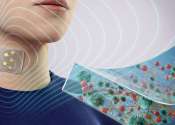Developing artificial skin that can regenerate skin and transmit sensation at the same time
Damage to nerve tissue due to skin defects such as burns, skin diseases, and trauma causes loss of sensory and cognitive functions that are essential for life-sustaining activities, as well as mental and physical distress. ...
Apr 4, 2024
0
32









